![]()
![]()
![]()
SDQ Dive Centre

SDQ Dive Centre
The SDQ Dive Centre is staffed by:
Dive Briefings
Near the boat there's a hut with a board which lists the dive sites and dive times for the day. The briefing proper may take place here or on the boat. The briefing basically tells you some basic information about the dive site (eg white or black sand, sloping or flat, general route) and the marine life you might see. Generally though, if you have specific questions to ask, like is there a current and how strong it is, just ask, rather than wait passively for the information. The most practical thing to do when diving in Lembeh, is to follow your guide. In this way, you will see the best that the Lembeh Straits has to offer, you will not get lost, and you will not have to huff and puff a hundred metres back to the boat after surfacing.
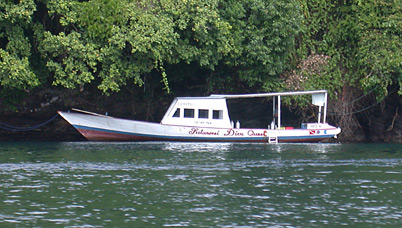
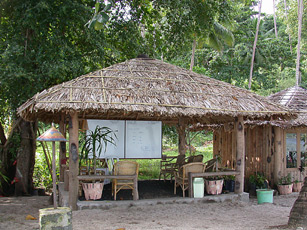
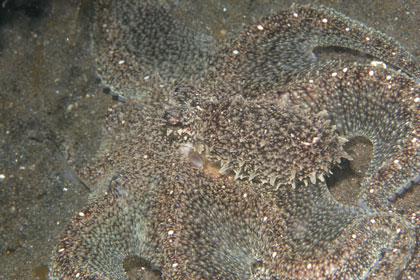
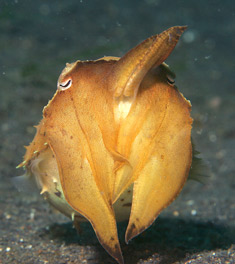

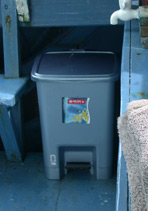
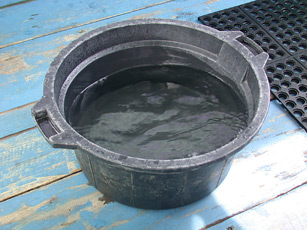
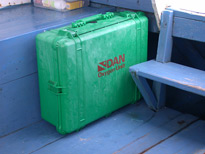
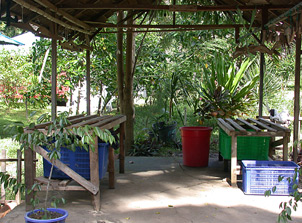

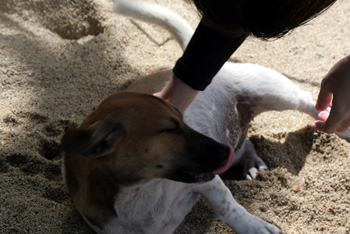
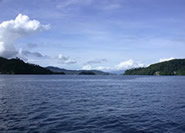
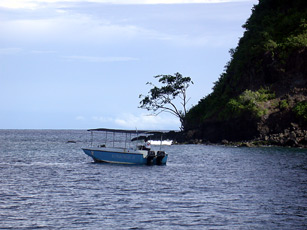


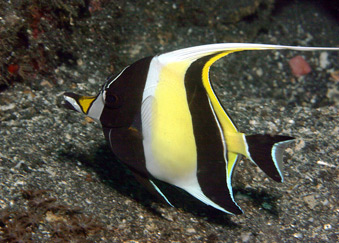

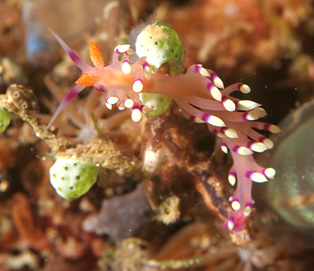
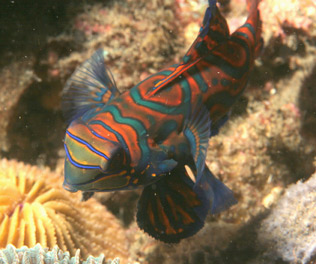
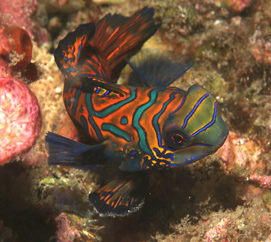
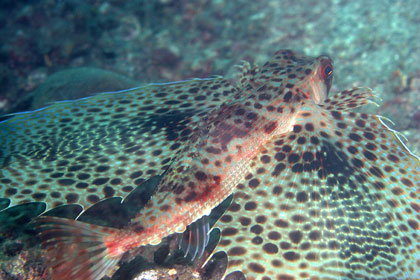

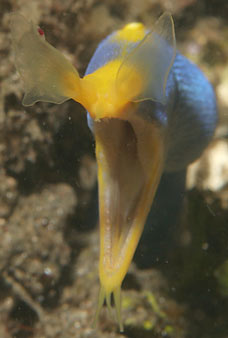
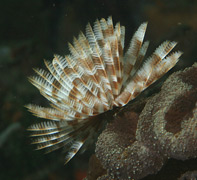
SDQ's guides are rotated between the Bunaken and Lembeh resorts. When we went in low season Jan 06, Rudy or Gayius were the guides. Nan, the instructor, stayed behind in the resort to do admin. In high season, Nan helps out with guiding. Nan is quite fluent in English, but even if the others don't have the same flair, they will tell you the basics, and if you just stick close to them during your dive, you'll be fine. If you need anything, ask Nan.
When we went in January, Rudy led two of us the whole time, while Gayius led a solo guest until she left, and then he led a couple after that. So in low season, the guest-guide ratio is 2:1. Even in high season, the ratio is pretty good because the resort accommodates up to 10 guests.
Rudy is an excellent guide. His familiarity with the dive sites and marine life is like our familiarity with breathing. For example, at what appears to be a barren stretch of black volcanic sand, he would take his pointer, gently sift through the sand and lo and behold, an octopus appears out of nowhere. He can spot a tiny seahorse camouflaged in surroundings identical to its appearance. He can bring you on a meandering 60-minute dive and bring you right back to the very ladder of the boat, without using a compass. He will not rush you and is totally cool if you want to stay in one spot and take 50 shots of a nudibranch.
* Please note that the dive guide community in Lembeh is pretty small, they do move around, and it's hard to keep track of who has moved where. The names here are probably out of date as some have moved to other resorts. As of Apr 09, Nan and Rudy are now at Nomad Adventure Divers, and Gayius I think is at Lembeh Resort.
We had Ancu and Hairul as our boat crew. They will help you:
Chivalry meter: Excellent
The rest of the staff will rinse your diving equipment at the end of each day, and hang it out to dry. This ensures that your equipment is nice and fresh for every dive. No stale wet odour or salty-tasting regulator.
Pino and her trusty assistant Bee Gee, will see you off when you embark on your dive trips, and will often be on the beach to welcome you when you come back. Another of Pino's duties is to sniff out and chase away the sand crabs from their homes.
There are two dives in the morning, and one in the afternoon. For the morning dives, I loved the fact that each day, the surface intervals varied according to the time taken to play a game or two of Dumb (checkers) that the guides and boat crew played.
During these surface intervals, it's lovely to just nap under the sun on the front deck or the roof of the boat. And because they usually lower the ladder during the surface interval, you can also take the occasional dip (or pee) in the calm water.
If the weather is good (and in January, supposedly a rainy month, we had sunshine every day), the surface intervals are long enough for your towels and swimsuit to dry to a nice warm toasty state. You know, that just encapsulates the essence of Sulawesi - do what you have to do, but take time to nap in the sun, and everything will turn out nice and toasty. Because in Sulawesi time slows down, you feel yourself relaxing, and then you start feeling like you should drop your career, go live in Sulawesi where you can dive and play checkers every weekend, and fill your weekdays doing something noble like teach.
One thing to learn about Indonesia (and many places in Asia for that matter) is the concept of Rubber Band Timing. In Lembeh for example, the dive board will say the dive starts at 8.30am, but this usually means any time BETWEEN 8.30 and 9am. Even if you ask the staff, they will say "some time around 8.30, 9, maybe 9.30" - and they really mean it! They're not trying to pull your leg!
The same goes for meal times. I suspect it depends on what's on the goggle box. So what do you do? Just Chill. If you're notwhere you're supposed to be, the resort staff will come and knock on your door. For me, this is a much better arrangement than in a regimented place where you get ticked off for being one minute late. I know some people are sticklers for punctuality, and I totally respect their reasons, but for me, I prefer a more relaxed, laid-back pace when I'm on holiday. Thank you.
Standard Dive Day
6am Wake up because the sun is shining in your room. Set up camera and do really important things like go to the toilet, brush your teeth, do your hair, put on contact lenses.
7.30 Breakfast
8.00 Return to room. Sit on throne. Wash up. Test camera. Dunk camera and check for leaks.
8.30 Embark for two morning dives
Between 12.30 and 1pm - Return for lunch. Return to room first to rinse off (there is time to unbraid, condition and comb your hair). Charge strobe and switch CF cards.
1pm Lunch
1.30 Return to room for quick nap.
2.15 Wake up. Braid hair. Test and dunk camera.
2.30 Embark for one afternoon dive.
4.30 or thereabouts Return to room. Rinse off (unbraid, condition, comb). Take nap. Electricity SHOULD come on by 5pm so even before 5pm, plug in everything. This is so that your equipment will automatically start charging when you're napping.
6.15 Wake up. Braid hair. Test and dunk camera.
6.30 Embark for night dive
7.45 Return to resort. Have shower, change, and go for dinner.
Electricity will be on overnight till 5am, so if you have a few things to charge, either charge them one at a time if they charge quickly, or use a multiway adapter for the things that charge overnight.
Mandarin Dive Day
To see the Mandarin fish, you have to reach their abode at 5.30pm. This means you do a special dive that starts at 5pm. When we booked our Mandarin dive, the resort re-arranged the day's diving programme just for us:
6am Early morning dive
Return for breakfast
9.30 Second and third dives
Return for lunch
Siesta
5pm Depart for Mandarin Dive
Return for dinner
Sleep
There are some things which you may have heard about SDQ, but we did some investigative work to find out how true they were...
The reason why I'm including this section is because the message board made us a little apprehensive before our trip. But after our 6-day (15-dive) trip there, we're very happy with SDQ! If you need any objective advice on SDQ, email me.